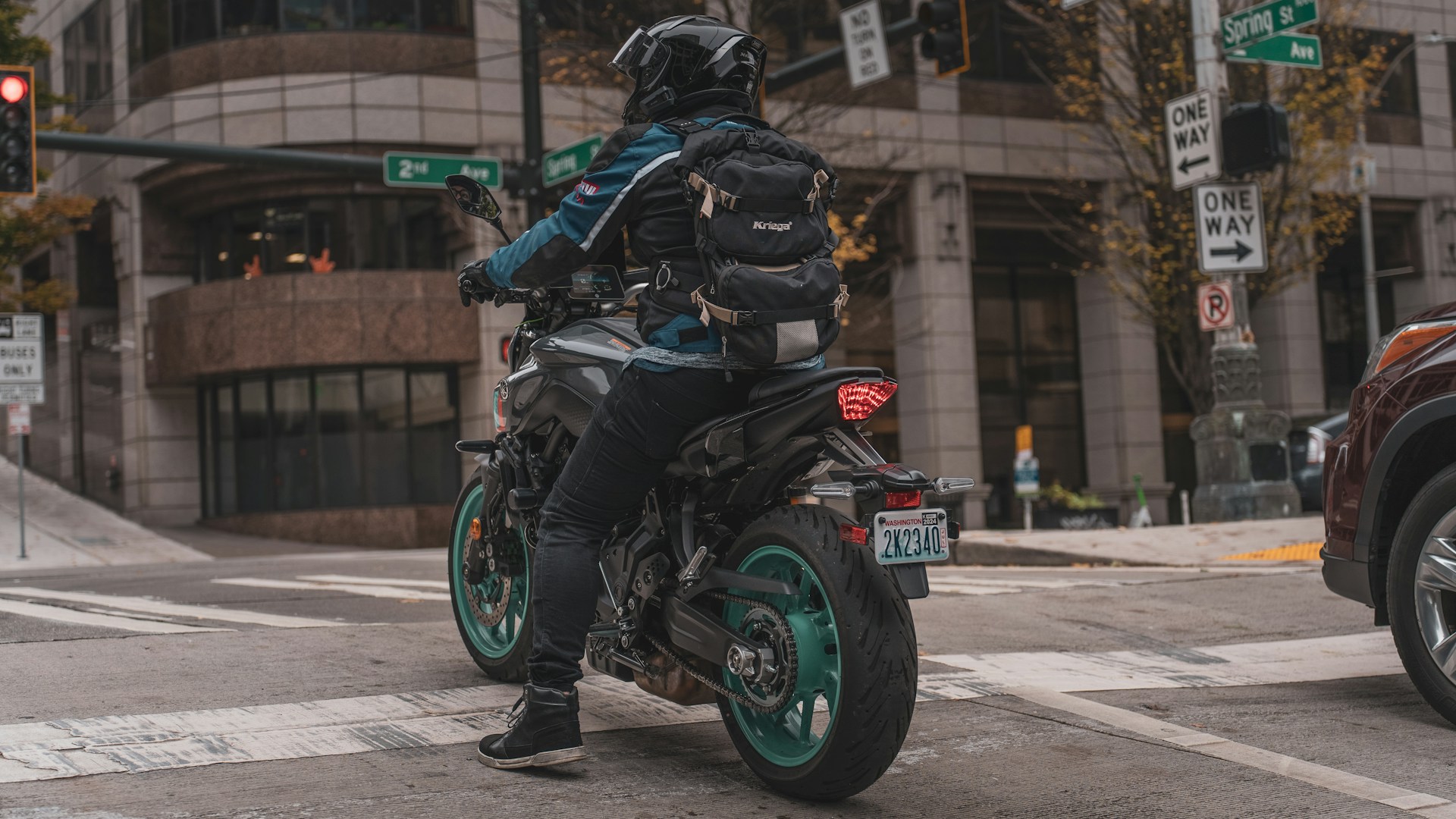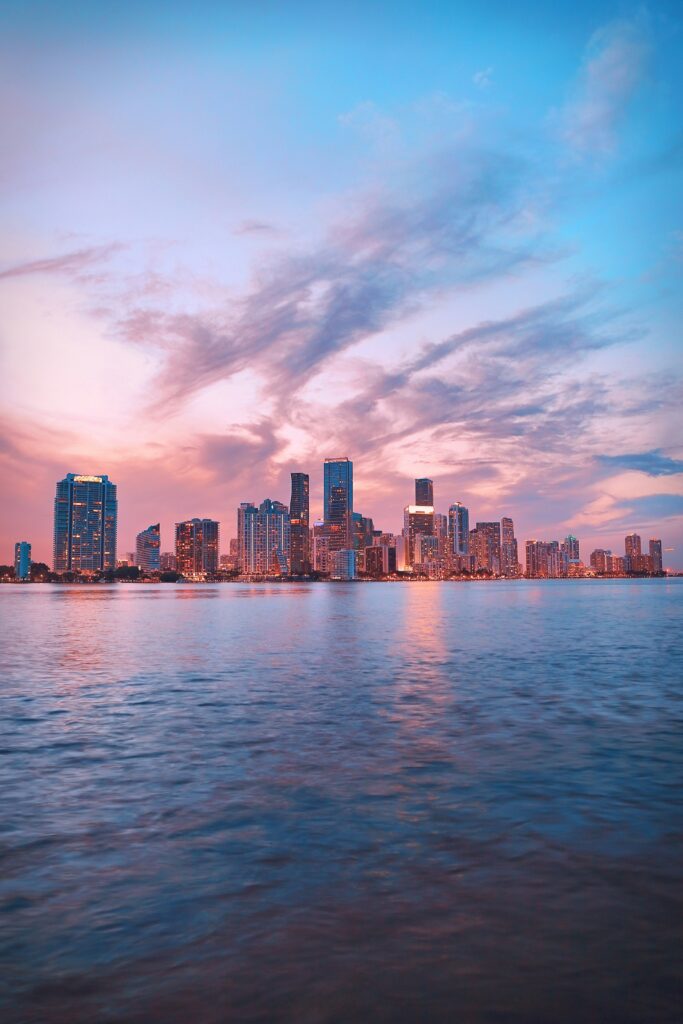Now Reading: Lane-Splitting Can Come With Risks Beyond a Traffic Ticket
-
01
Lane-Splitting Can Come With Risks Beyond a Traffic Ticket

Lane-Splitting Can Come With Risks Beyond a Traffic Ticket
While motorcycles have been around since the 1890s, their popularity didn’t really take off until the end of WWII. Now, it’s almost impossible to go anywhere without seeing at least a couple of motorcycles on the road.
However, riding a motorcycle can come with risks. Sometimes the risks are caused by riders, like when they decide to ride between the lanes. So, what is the legality of lane splitting and filtering and why is the maneuver considered so dangerous?
What is Lane-Splitting?
Most motorcycle riders are familiar with the term lane-splitting even if it’s something they never do. Have you ever noticed a motorcycle riding between traffic lanes? If so, you’re witnessing an example of lane-splitting.
When traffic has slowed to a crawl, some motorcyclists ride on the lanes’ dividing line. In other words, the motorcycle is moving between two lanes of traffic. If you’re stuck in traffic, watching a motorcycle go by without having to slow down or stop can be frustrating. You may also find yourself asking if lane-splitting is legal.
Is Lane-Splitting Legal in the U.S.?
The exact laws regarding the legality of lane-splitting can vary between different states. Currently, with the exception of California, the practice of riding a motorcycle between traffic lanes is illegal. However, not all states have specific laws on the books prohibiting lane-splitting—yes, we know this can be confusing.
For example, Texas doesn’t exactly explicitly prohibit lane-splitting. However, Texas Transportation Code 545.060 does prohibit motorcycles from overtaking and/or passing a vehicle in the same lane. Even though you’re technically not in the same lane as another vehicle, this law can be used to discourage motorcycle riders from engaging in lane-splitting. The law goes on to require all motorcyclists to follow the same traffic laws as other vehicles.
What is Lane-Filtering?
Okay, so lane-splitting is essentially illegal everywhere except in California but what about lane-filtering? This practice is almost the same as lane-splitting. The primary difference is whether the traffic is slowly moving or completely stopped.
If traffic is stopped and a motorcycle is riding between the occupied vehicle lanes, it’s known as lane-filtering. The same laws apply to both lane-splitting and lane-filtering. In other words, the practice is only legal in California. So, if you ride a motorcycle in any state other than California, you must wait in traffic with other motorists.
Risks of Lane-Splitting and Lane-Filtering
Sometimes, it can seem like any possible risks are worth not being stuck in a traffic jam. Having to move at a crawl on a motorcycle isn’t easy and most riders have places to be and schedules to keep.
Being able to scoot down the lane and make it to an appointment on time can be tempting. Before you decide to take off down the lane’s dividing lane, take a minute to consider the potential risks. The risks can go beyond the possibility of an expensive traffic fine.
In 2015, the University of California Berkeley studied the risks of lane-splitting and found some surprising results. The maneuver can be surprisingly safe, as long as motorcycle riders keep speeds at or below 15 mph.
The NHTSA (National Highway Traffic Safety Administration) also conducted a study. This study indicates that lane-splitting and filtering can actually reduce motorcycle riders’ risk of rear-ending a lead vehicle.
Even though the two studies seem to indicate there can be advantages to lane-splitting like reducing the number of motorcycle-involved rear-end accidents, you should still be aware of the potential risks.
Vehicle drivers may not always notice a motorcycle riding between the lanes. If the vehicle suddenly decides to merge into the other lane, an accident can occur. There’s also the danger of a driver opening their car door and hitting a passing motorcycle. Either of these accidents can result in serious injuries to the motorcycle rider.
Potential Penalties for Lane-Splitting and Filtering
The penalties for lane-splitting and filtering vary by state. Most states will ticket riders and the fines can be expensive. Since lane-splitting is considered a moving violation, you may end up with a point or two being added to your license.
Don’t worry, the addition of a couple of points shouldn’t affect your license’s status. In other words, you probably don’t have to worry about your driver’s license being temporarily suspended. However, your insurance provider may view the ticket as an indication you’re an unsafe rider and raise your monthly rates.
You should also consider what happens if an accident occurs. Since you’re engaged in lane-splitting or filtering, you’re probably the at-fault party. This can be especially true in states that follow comparative negligence rules. This legal standard allows for more than one party to be liable for an accident and it can impact your potential compensation amount.
Steps to Take After a Lane-Splitting Accident
If you’re involved in an accident while riding between lanes, you should follow a few steps to help protect your legal rights.
Report the Accident
Most states require immediate reporting of any accident that results in injuries or fatalities. Even if you and the other involved parties seem fine, it’s still a good idea to report the incident. Yes, this means waiting for the authorities to arrive but it’s often with the time and effort.
Since you’re guilty of lane-splitting, you want to ensure you’re not assigned more than your fair share of the blame. Staying at the accident scene gives you the chance to tell the responding officers your version of events.
Seek Medical Attention
Even if you fall off your motorcycle going 15 mph, you can still sustain serious injuries. You may feel fine immediately after the accident but you should still plan on visiting a healthcare provider. You may have internal injuries and it can take a while to start displaying obvious signs and symptoms.
Contact an Accident Attorney
Before you start thinking about filing a claim for your damages after a lane-splitting or filtering accident it’s usually a good idea to discuss your case with an experienced accident attorney.
Your lawyer can help ensure you receive fair compensation, sometimes even if you’re partially responsible for the accident.










